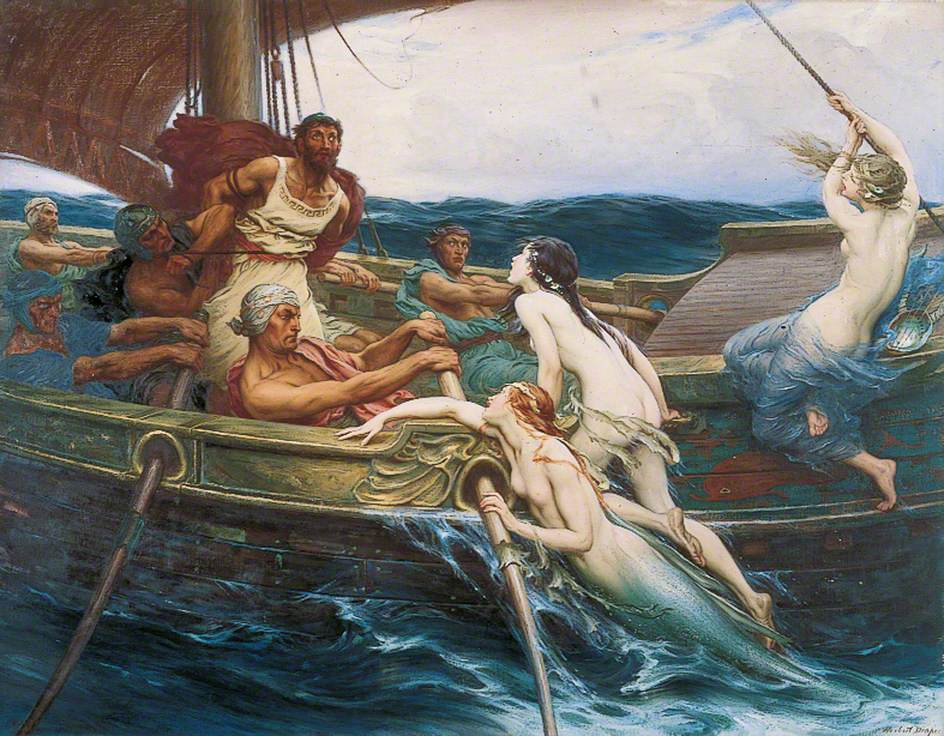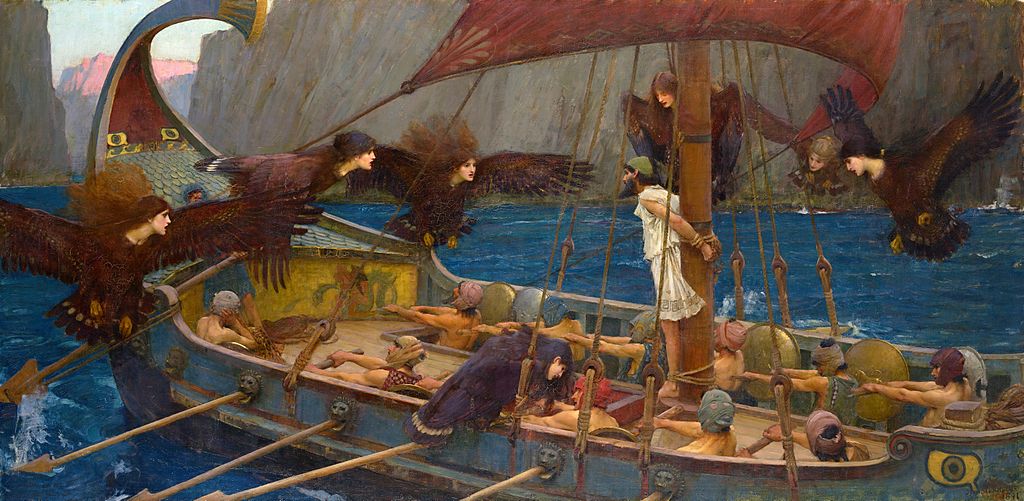

The two paintings here portray the blinding of the Cyclops by Odysseus. Although they portray the same scene, the way it is portrayed is vastly different. The painting on the left focuses on the brutality if the scene. The face Odysseus makes while blinding the Cyclops indicates some sort of brutality and rage on his part. The Cyclops crying out in pain with a stick in his eye is also an image that sears into the mind. However, it isn’t an accurate portrayal of the text. In the text, Odysseus and his crew mates carry the stick together to blind the Cyclops. I think this painting downplays that in order to make Odysseus more heroic than he is in the text. The painting on the right however, is a more accurate depiction of the text. It shows the teamwork that Odysseus used in the text that the left painting completely ignores. Even though the Cyclops is about to get blinded in this painting, there is still a sense of peacefulness present here, especially with the way the fire turns into a curled smoke. Something that should be noted is the placement of Odysseus in both paintings. On the left he is right in the center, but on the right he’s more closer to the edge of the painting. This could mean the the actual act of blinding the Cyclops isn’t the main focus of the right image. In fact, the focus of this painting is to highlight the grand size difference between the Cyclops and Odysseus (and his crew). Another thing that should be noted is how the Cyclops looks in both paintings. In the right painting the Cyclops is much more of a beast than the painting on the left. The out of shape body, the fangs on his teeth make him look like a horrific monster. The left painting however, makes him look like a human. He has a defined body, maintained hair and a normal looking mouth. In fact, the Cyclops in this painting could pass for a Greek god if he had one more eye.














